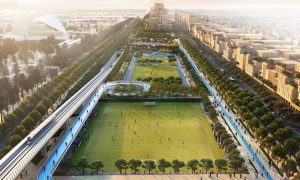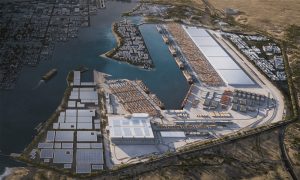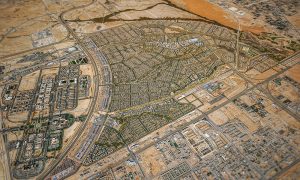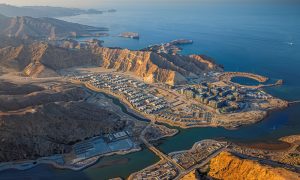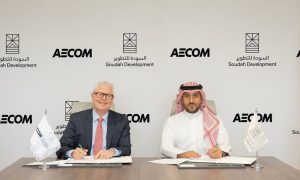“COP28 has the potential to have a significant impact on the built environment in the region”
The regional built environment still has a way to go before sustainable practices become standard, says Drees & Sommer’s Stephan Degenhart

Sustainability has been and continues to be a hot topic within the built environment across the globe, given the sector’s significant contribution to greenhouse gas emissions (GHGs). The World Green Building Council (World GBC) states that buildings are currently responsible for 39% of global energy related carbon emissions: 28% from operational emissions, from energy needed to heat, cool and power buildings, and the remaining 11% from materials and construction. As a result, the sector has been under mounting pressure to reduce its impact on the environment.
“In the last 12 months, I have observed a greater emphasis on sustainable development and practices in construction projects. Many governments internationally have implemented regulations that require projects to use renewable materials and adhere to green building standards. Additionally, I have seen a growing trend towards making construction projects more energy efficient, which includes the use of solar panels, efficient lighting, and other technologies,” Stephan Degenhart, Associate Partner of Drees & Sommer, Managing Director of Middle East & Asia Pacific tells Middle East Construction News (MECN).
He adds, “Projects are increasingly taking into account the impact of their construction on the environment and local communities, with an emphasis on reducing pollution and preserving natural resources.”
Unfortunately, Degenhart reckons the built environment still has a way to go before sustainable practices become standard practice. He observes, “Overall, I believe sustainable development practices are very much more front of mind than in previous years, however, we have some way to go before these practices become the norm rather than exceptions.”
In late October 2022, the UNEP cautioned that the lack of progress leaves the world hurtling towards a temperature rise far above the Paris Agreement goal of well below 2C, and preferably 1.5C.

Within the Middle East and, more specifically the GCC, sustainability has been embedded into a number of governments’ long-term plans, as they move forward with their respective vision agendas to diversify their economies away from oil and gas. In October 2021, the UAE announced its Net Zero by 2050 strategic initiative while, in the same month, Saudi Arabia’s Crown Prince announced that the country aims to reach Net Zero by 2060.
In late November 2022, following the conclusion of COP27 which was held in Sharm El-Sheikh, Egypt, His Highness Sheikh Mohammed bin Rashid Al Maktoum, Vice President and Prime Minister of the UAE and Ruler of Dubai, said that the UAE would host COP28 at EXPO City Dubai. He also stated that the event would be the most important event hosted by the nation in 2023.
Asked about the potential impact COP28 could have on the built environment in the UAE and the broader GCC region, Degenhart responds, “COP28 has the potential to have a significant impact on the built environment in the region, as it brings together world leaders to discuss and develop global policies on climate change. It is likely that there will be an increased focus on sustainable and resilient construction and infrastructure in the region, as well as greater awareness of the need to reduce carbon emissions and protect the environment.”
Discussing his firm’s own sustainability goals and plans for the year, Degenhart is quick to point out that his firm has set ambitious sustainability goals for 2023 and beyond.
In early November 2022, Abu Dhabi environment and energy agencies unveiled a 60% clean electricity plan for the emirate by 2035 and, in early December 2022, JLL’s Louise Collins’ shared her COP27 takeaways and thoughts exclusively with MECN.

“Our plans include developing energy-efficient and green building solutions, promoting resource efficiency and circular economy principles, and contributing to the UN’s Sustainable Development Goals. In addition, we are committed to reducing our own carbon emissions and reducing our environmental footprint through green practices.”
He concludes, “We also aim to increase our involvement in the digital transformation of the built environment, such as the development of smart cities and the use of digital technologies to reduce energy consumption.”
In mid January 2023, the Copernicus Climate Change Service’s (C3S) 2022 Global Climate Highlights report warned that several high temperature records were broken in Europe and across the world, while extreme events such as drought and flooding affected large regions of the world in 2022.
